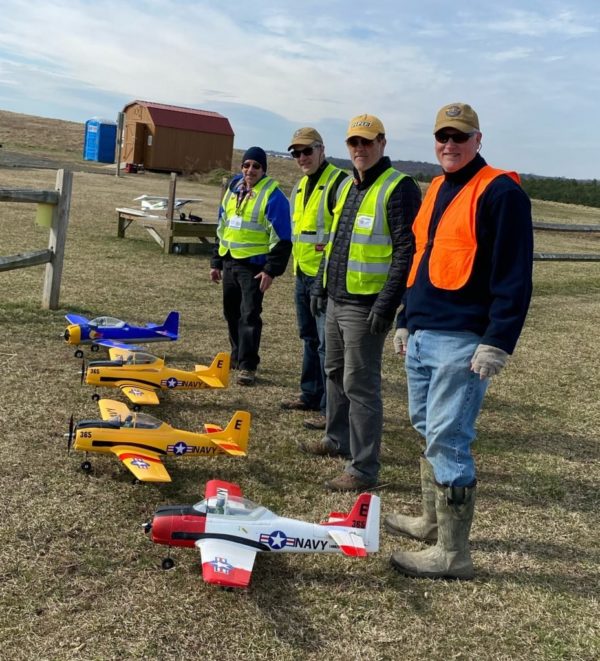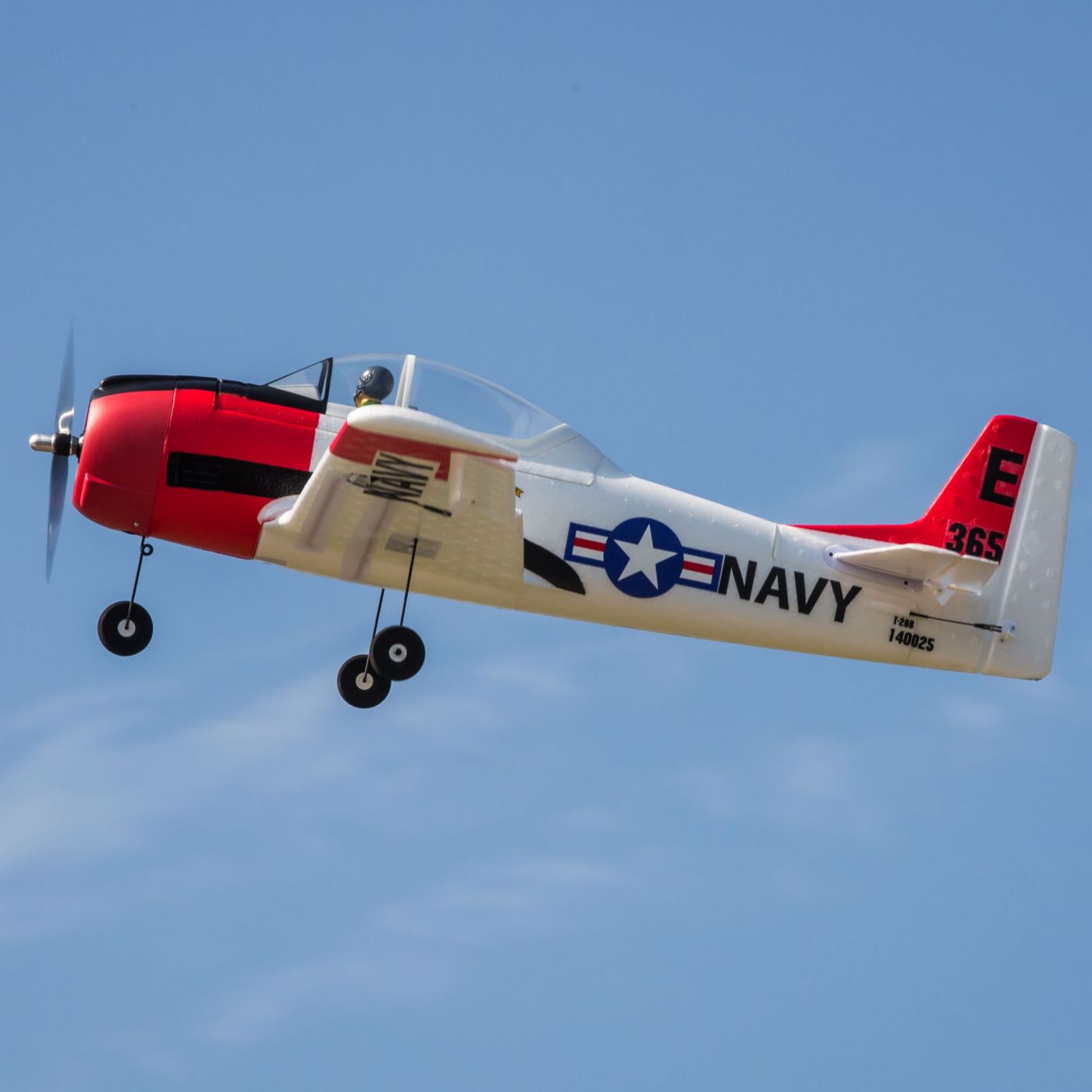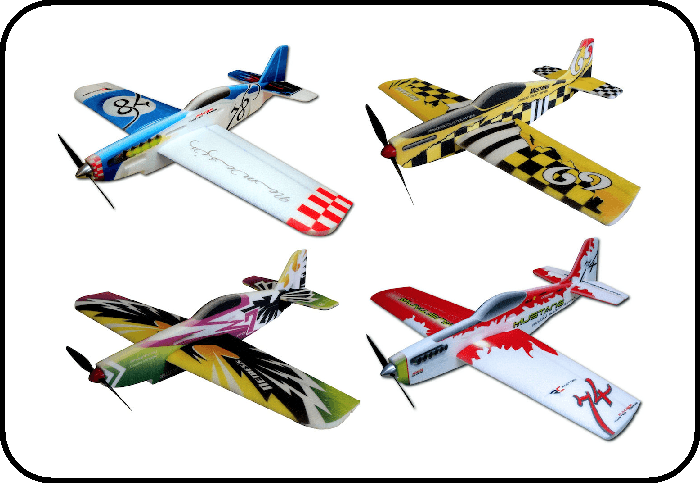
NVRC Pylon Racers at Lorton Field
Race Day Schedule
Check the Events page for the next race date. A typical race day looks like:
Registration: 9-9:30AM
Test flying: 9-10:00AM
Racing starts: 10:00AM
Plan to fly in at least 1 heat per race (2-4 heats per race depending on entries)
Plan on 3 races per date.
The Plane(s)
We will run two separate heats of Pylon Racing. Each aircraft should have an easily identifiable color scheme. Blue painters tape will be provided if needed to change the stock paint scheme(s).
Heat 1: T-28’s
The first is with E-Flite’s T-28; 1.1m (EFL4450) any color scheme is OK or the discontinued Parkzone orange and white legacy 1.1 m. The new E-Flite T-28 Trojan 1.2m BNF Basic with retracts and flaps is not included in this set.
Stock everything (except paint scheme) – propeller, wheels, motor, etc. Battery can be 2200maH 20-30C max. The “Stock” battery is 1800mah. The plane easily handles the 2200 maH; no RTF total weight restriction.
The E-Flite T-28 Trojan 1.1m BNF Basic Product #EFL4450 that we use for pylon racing has been discontinued by Horizon. You can still find them used online for about $100
The following equipment is stock – Fixed gear, Prop, Engine, ESC
Battery: 3S 2200 max (Note that the standard battery size for the latest generation of Horizon Hobby 1.1 m T 28 is 4 S, but we don’t race with that)
Heat 2: Limited Class
This is for any electric fixed wing aircraft with a 3s 2200mah battery or less. No C rating restriction, no motor size restriction, no airframe design restrictions. Bring an electric 1/2A racer, a flying foamy wing, or anything in between.
Race course:
- 2 pylons
- Always left turning (counter clockwise, like baseball and NASCAR) This may be opposite the takeoff and landing direction
- Start / Finish at midfield
Warmup:
- Before race start, each plane must demonstrate several solo legal laps
- During warmup, judges posted at the pylons will provide confirmation that the turns are legal – pilots use this time to calibrate their visual picture of a legal lap and trim their plane at race speed
Start:
- At a set time. Race marshal counts down to that time.
- Planes may takeoff at any time, in any manner the pilot chooses
- Best practice: racers take off ~ 1 minute prior to start to allow time for mulligans and trim at speed
- At race start time, typically all planes are airborne, doing a “sailboat race” start to cross the midfield line after the start time, headed left to right
- A plane that crosses the start line before race start time must circle back behind the line before beginning their first legal lap
Race:
- Each plane flys 10 legal laps around the oval formed by 2 pylons
- On the “left to right” leg, pilots should aim to track down the runway centerline.
- On the “right to left leg” planes overfly the far side rough of the airfield
- Pilots judge the legality of their own laps
- It is recommended that each pilot have a spotter / lap counter
- A turn around a pylon, if cut short, must be made up – either with an immediate turn back around the pylon or by adding an entire extra legal lap to the race duration.
- A plane that contacts the ground is allowed by rules to continue the race, if possible and if re-launched from the point of ground impact
- “On the field” and “taking off…” calls are still required, if re-launching mid-race
Declaring a winner:
- A pilot will loudly announce “finished!” when passing the midfield start/finish line after completing 10 legal laps.
- As a technique, spotters should shout the number of laps remaining each time their plane passes the midfield start/finish line, beginning with “1” and counting up as the race progresses.
- If no plane finishes 10 legal laps, the plane accomplishing the most legal laps is the winningest loser. If planes crash on the same numbered lap, the plane with the piece of wreckage with the most progress towards the next legal lap is declared the winningest loser.
Mid-air collisions:
- After completing 10 legal laps, pilots should extend and/or climb out of the racetrack oval to allow for the remaining racers to finish. If you must land, you may, but you should not become an obstacle for racers or landing planes. Standard protocols of announcing “landing” and “on the field” apply
- Are a known risk of racing
- If you can’t accept being wrecked, don’t race
- Intentional collisions are a gross breach of etiquette and never tolerated
Lessons learned:
Spotters are necessary, allowing pilots to focus on flying rather than counting and making the race more interesting for spectators by providing the “score” each lap.
Open class races, allowing any type of plane, are usually decided by plane performance in the first 2 laps and are far less interesting than stock races.
Contact Jeff Cashman or Chris Bunker for more info on the races.
Hope to see you at the races!


